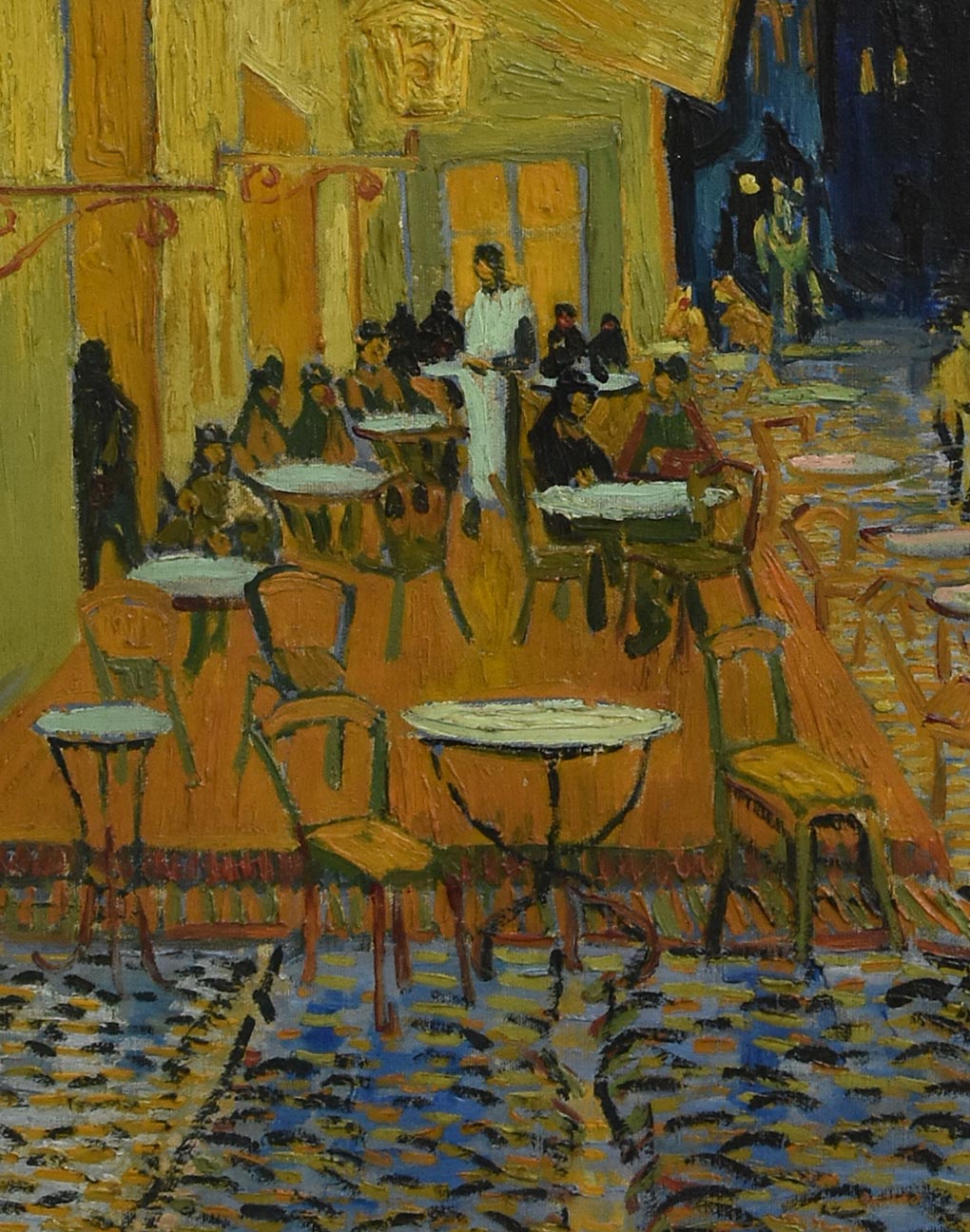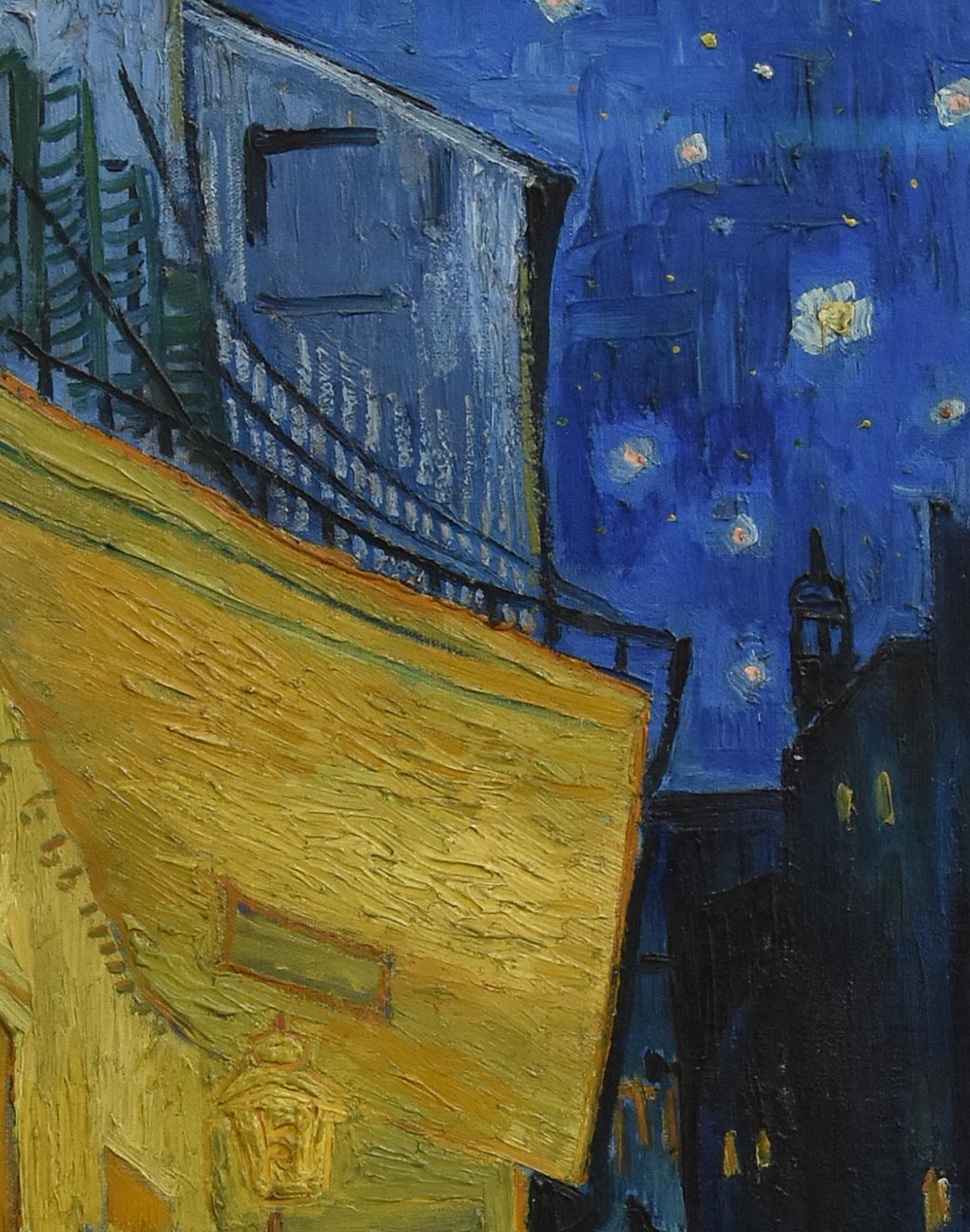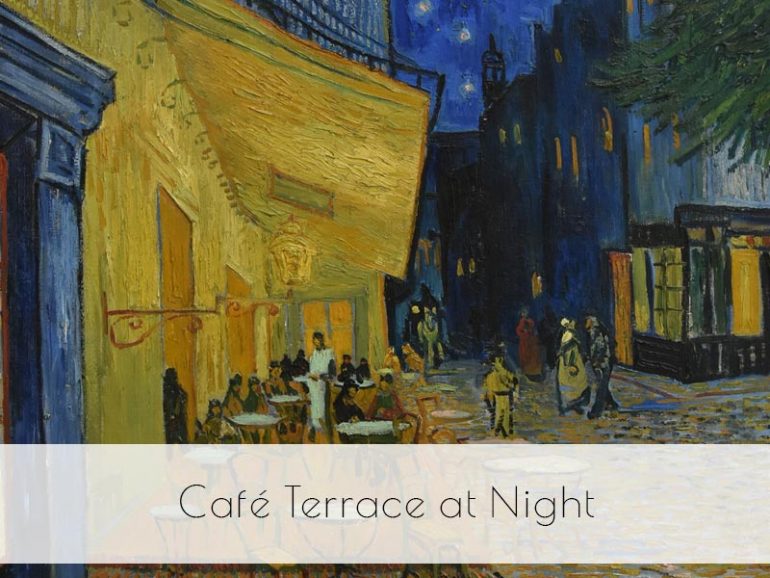Vincent van Gogh, one of the most celebrated artists of the Post-Impressionist era, created some of the most iconic and emotionally resonant works in art history. Among these masterpieces is “Café Terrace at Night,” painted in 1888. This vibrant and evocative painting captures a quiet evening in the small town of Arles, France. For art students, understanding this work not only offers a glimpse into Van Gogh’s unique style and vision but also provides insight into the broader context of his life and the late 19th-century art world.
“Café Terrace at Night” was painted in September 1888, during Van Gogh’s stay in Arles, a town in the south of France. This period was one of the most prolific and creative in Van Gogh’s career, marked by intense productivity and experimentation with colour and light. The late 19th century was a time of significant change and innovation in the art world, with the emergence of new styles and movements, including Post-Impressionism, which sought to move beyond the limitations of Impressionism by emphasizing more symbolic and expressive use of colour and form. Van Gogh, deeply influenced by these changes, sought to capture the world around him with a vivid, emotional intensity that set his work apart from his contemporaries.

The painting is a remarkable example of Van Gogh’s ability to transform ordinary scenes into extraordinary visual experiences. The painting depicts a charming street scene in Arles, with a brightly lit café terrace dominating the foreground. The vibrant yellow of the café’s awning and interior contrasts sharply with the deep blues and purples of the night sky and surrounding buildings. The cobblestone street, rendered in rich, textured strokes, leads the viewer’s eye into the painting, towards the warmly lit interior of the café and the scattered patrons enjoying their evening.
Van Gogh’s use of colour in this painting is particularly noteworthy. The bold, complementary colours create a dynamic tension and vibrancy, while the subtle play of light and shadow adds depth and atmosphere. The stars in the night sky, depicted with swirling, almost celestial brushstrokes, hint at Van Gogh’s later masterpiece, “Starry Night.” The overall mood of the painting is one of peaceful solitude, capturing a moment of quiet reflection amidst the hustle and bustle of everyday life.
Inspiration and Creation
Van Gogh’s inspiration came from his surroundings in Arles, where he found a wealth of subjects to paint. The café depicted in the painting, located at the Place du Forum, still exists today and has become a popular tourist destination for art enthusiasts. Van Gogh was fascinated by the interplay of artificial and natural light, and he sought to capture the unique ambiance of the café at night. This painting is one of the first in which Van Gogh explored the theme of night scenes, using bold, contrasting colours to convey the vibrancy and energy of nocturnal life.
In letters to his brother Theo, Van Gogh expressed his excitement about working on night scenes and his desire to create something that was both realistic and dreamlike. This painting reflects this ambition, blending the real and the imaginative in a way that draws viewers into Van Gogh’s world.

About Vincent van Gogh
Vincent van Gogh was born in 1853 in the Netherlands and is known for his expressive and emotive use of colour and brushwork. Despite his immense talent, Van Gogh struggled with mental health issues throughout his life, which often affected his ability to maintain personal relationships and professional stability. His artistic career, although brief, was extraordinarily productive; he created over 2,100 artworks, including about 860 oil paintings, many of which were produced in the last two years of his life.
Van Gogh’s style evolved significantly over his career. Early works were darker and more sombre, reflecting his interest in the struggles of working-class people. However, his move to France and exposure to the bright, vibrant colours of the southern landscape profoundly influenced his palette and technique. Despite his struggles, Van Gogh’s work has had a lasting impact on the art world, inspiring countless artists and continuing to captivate audiences worldwide.
Van Gogh’s painting is celebrated not only for its beauty but also for its innovative use of colour and light. It has been the subject of numerous studies and exhibitions, and it continues to inspire artists and art lovers alike. Van Gogh’s ability to infuse everyday scenes with emotional depth and vivid colour has left a lasting legacy, making him one of the most influential figures in the history of art. His work challenges viewers to see the world through his eyes, revealing the extraordinary in the ordinary.

“Café Terrace at Night” stands as a testament to Van Gogh’s genius and his unique ability to capture the essence of a moment. For art students, studying this painting offers valuable insights into Van Gogh’s techniques and artistic vision, encouraging a deeper appreciation for his contributions to the art world.
If you would like to receive a roundup of all of our blog posts once a week to keep you inspired in your inbox, why not sign up to our newsletter. You can access our sign up at the top of our page. If you are a London Art College student and you would like your artwork featured here, drop us a line at any time.

